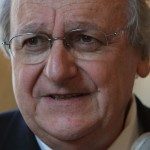Link to Pubmed [PMID] – 16177231
Mol. Biol. Evol. 2006 Jan;23(1):189-202
Minisatellites are DNA tandem repeats exhibiting size polymorphism among individuals of a population. This polymorphism is generated by two different mechanisms, both in human and yeast cells, “replication slippage” during S-phase DNA synthesis and “repair slippage” associated to meiotic gene conversion. The Saccharomyces cerevisiae genome contains numerous natural minisatellites. They are located on all chromosomes without any obvious distribution bias. Minisatellites found in protein-coding genes have longer repeat units and on the average more repeat units than minisatellites in noncoding regions. They show an excess of cytosines on the coding strand, as compared to guanines (negative GC skew). They are always multiples of three, encode serine- and threonine-rich amino acid repeats, and are found preferably within genes encoding cell wall proteins, suggesting that they are positively selected in this particular class of genes. Genome-wide, there is no statistically significant association between minisatellites and meiotic recombination hot spots. In addition, minisatellites that are located in the vicinity of a meiotic hot spot are not more polymorphic than minisatellites located far from any hot spot. This suggests that minisatellites, in S. cerevisiae, evolve probably by strand slippage during replication or mitotic recombination. Finally, evolution of minisatellites among hemiascomycetous yeasts shows that even though many minisatellite-containing genes are conserved, most of the time the minisatellite itself is not conserved. The diversity of minisatellite sequences found in orthologous genes of different species suggests that minisatellites are differentially acquired and lost during evolution of hemiascomycetous yeasts at a pace faster than the genes containing them.


